Travel Apps: Top 7 Trends to Watch in 2023
 Gabriel Kuriata
Gabriel Kuriata  Gabriel Kuriata
Gabriel Kuriata Travel. Together with Dating, Food & Drinks, it’s one of the three categories of mobile apps designed to make you go out, explore and meet people. Technically, we could include Weather here, but apps from this category may sometimes have an opposite effect ;)
The category is as diverse as the travel industry itself. Mobile apps are offered by independent publishers, hotel networks, travel agencies, airlines, coach operators and many other tourism companies. However, functionalities of apps from the this category can be roughly divided into these areas:
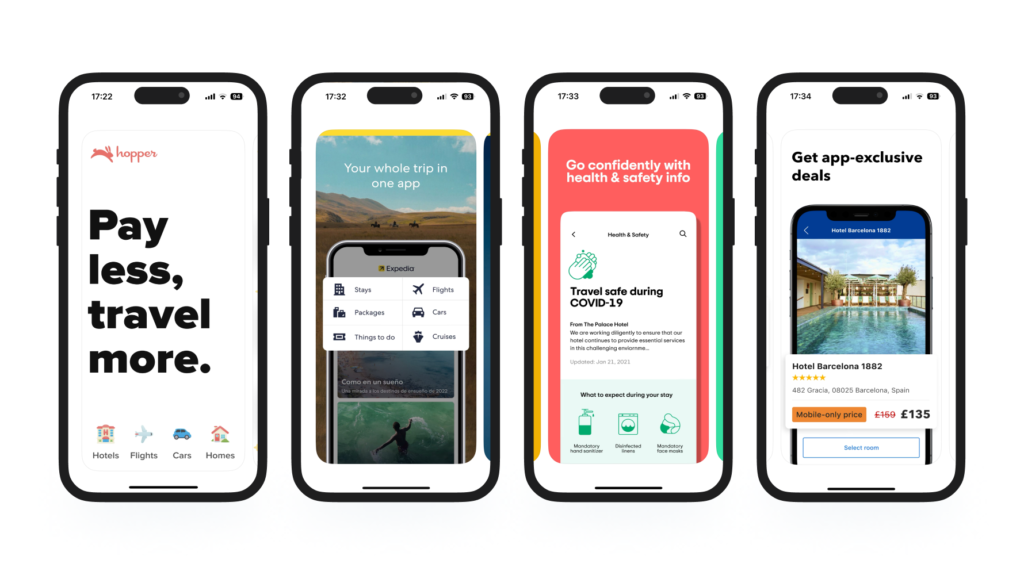
Booking, planning & preparation: from booking of hotel rooms (or any other type of accommodation), tickets for planes, trains and boats, to compiling must-see lists of local attractions. You may also add a handful of useful tools for exploring the outside world (like currency calculators and local safety information). Apps like Booking.com, Tripadvisor, Expedia, AirBnB and a multitude of others will either enable you to feel like a local, moving safely and efficiently around with accommodation and other necessities secured… or grab a last minute deal and just take the most out of life (Carpe Diem ;).
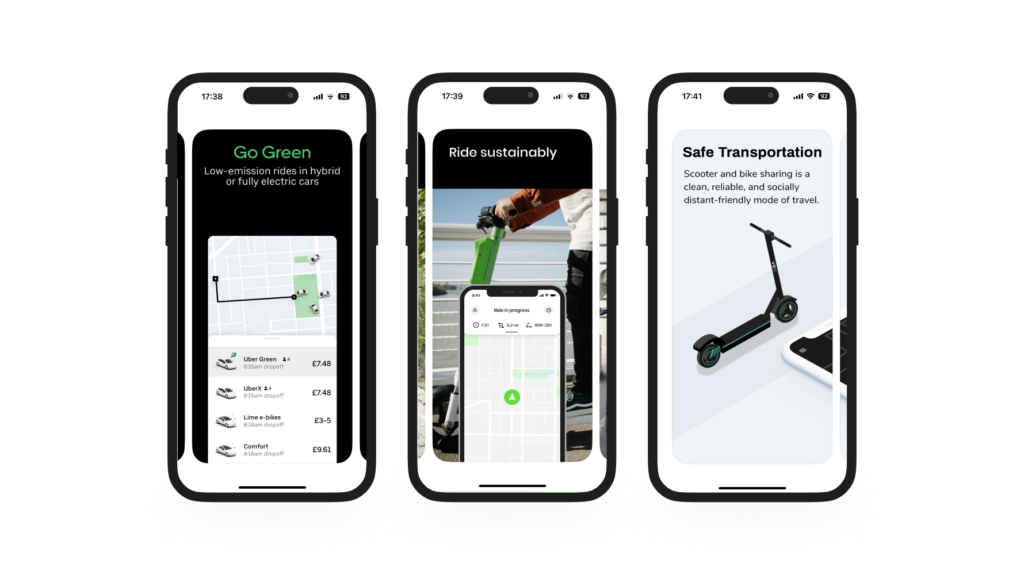
Getting you from point A to point B: from public transport assistants, to electric scooters, bikes, car rentals or ride hailing – apps like Uber, Lyft, BlaBla Car, Bird, Lime will make sure you get to your destination quickly & safely (provided you wear a helmet). Though crucial to the local populace, one can’t deny the importance of these apps for tourists. Just take a walk through your city in the summer and count all the people with backpacks and belt sachets moving around on city bikes and scooters (or them being parked outside any recognised sightseeing point).
At first, these functionalities may seem far apart, but they have one thing in common: travel apps make the outside world easier to navigate and more pleasant to experience. This has colossal implications for the condition of the category and key industry trends impacting mobile apps from this category.
Digital transformation and the dominance of mobile apps disrupted the tourism industry and how we move around. Now, the travel business and mobile apps can’t really exist without each other.
Given all this, it’s impossible to discuss the future of the category without the real world context. The impact of the economy, inflation, travel restrictions, local safety precautions and unique circumstances have a tremendous impact on the condition and adoption of mobile apps for traveling and transportation. Tied closely to life in the real world and influenced by external factors more than other categories.
It’s 2023: we have our freedom and ever since pandemic restrictions are no longer in place, Travel apps have been recovering… but the economy and inflation have tremendous implications for the entire industry. Nevertheless, after a slump in 2020, we finally can observe a rebound and have a generally positive outlook for this year.
According to Statista Digital Market Outlook, revenue generated from travel apps worldwide is expected to rise steadily in the following years, reaching over 533 million U.S. dollars in 2027
On one hand, according to a report by Booking.com, people are more optimistic about traveling in 2023 than in 2022. In general, lockdowns are no more and long-term planning and booking in advance makes much more sense than before.
On the other hand, travel expenses & recreation are among the first to be cut in case of tightening budgets and this is what we’re experiencing right now, with soaring prices and high level of uncertainty in the markets. Skyscanner’s 2023 travel trends report confirms what’s logical in such circumstances: those of us with just enough funds to go anywhere, will seek to make more informed decisions when it comes to spending. Traveling will become price-driven. Just take a look at the industry’s top booking app Hopper (number #2 in the Travel category on the App Store).
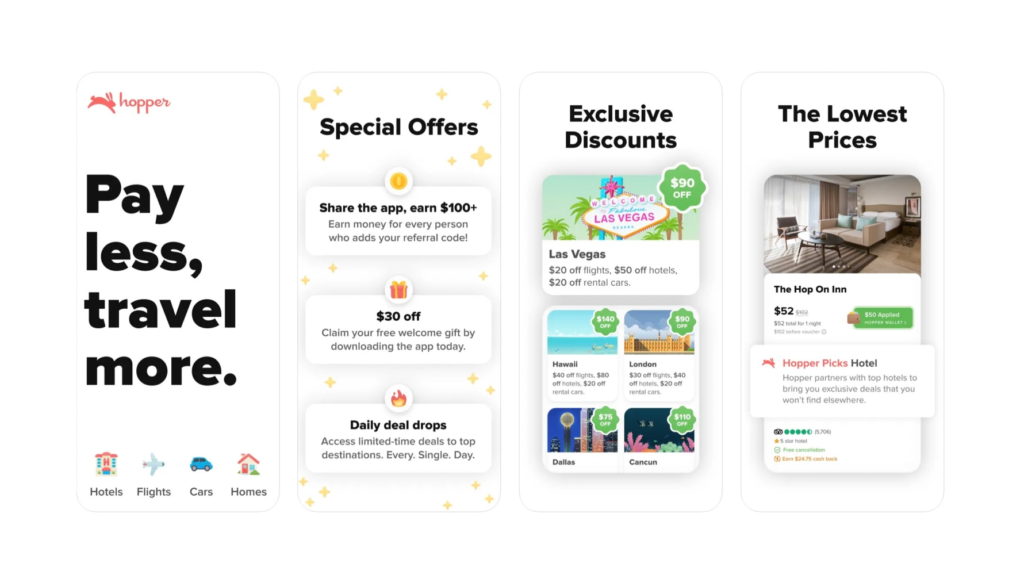
At the same time, attitudes and mindsets of travellers change. They will be even more conscious about the environmental impact and safety of their experiences (as evidenced by examples of app messaging shown before).
Other subcategories of apps from the Travel category are also affected by external factors. Tightening budgets and high gas prices encourage car sharing. Lower car ownership among millennials may boost car hailing and car sharing services, according to a report by Reportlinker.
The growth of apps for renting electric bikes & scooters is the direct result of cities being overcrowded and difficult to move through. These services can provide alternative transportation to those living on a tight budget.
Digital transformation started early for the travel industry. There’s some interesting bits of data and predictions on Google’s thinkwithgoogle.com blog that dates back a couple of years ago: 57% of US customers felt that brands should personalize their offers and an impulse traveling was a good option for 60% of them (provided a good offer was available). How is it looking now? A widely quoted report by WeTravel confirms that travellers are even more impulsive than ever, booking tickets closer to departure than ever.
What is the main takeaway from all this data? Segmentation is key to handling the rising population of cost-conscious customers and those with more resources to burn (and adequate expectations). Some customers like & seek those quick opportunities while others prefer careful planning and safe & responsible travel. Gender matters, age matters. The pandemic, though finally over, left a lasting change in customer preferences and behaviour. Just like the increasing buzz regarding safe, responsible and environmentally friendly travel.
These market factors and realities directly affect the trends for apps from this category that we think will dominate app development and creative direction in 2023.
Here’s our perspective of a company whose ecosystem of services helps mobile apps grow, acquire users and optimize their online presence. Infographic below reflects the condition of the category and indirectly confirms what’s been said about the travel industry in general:
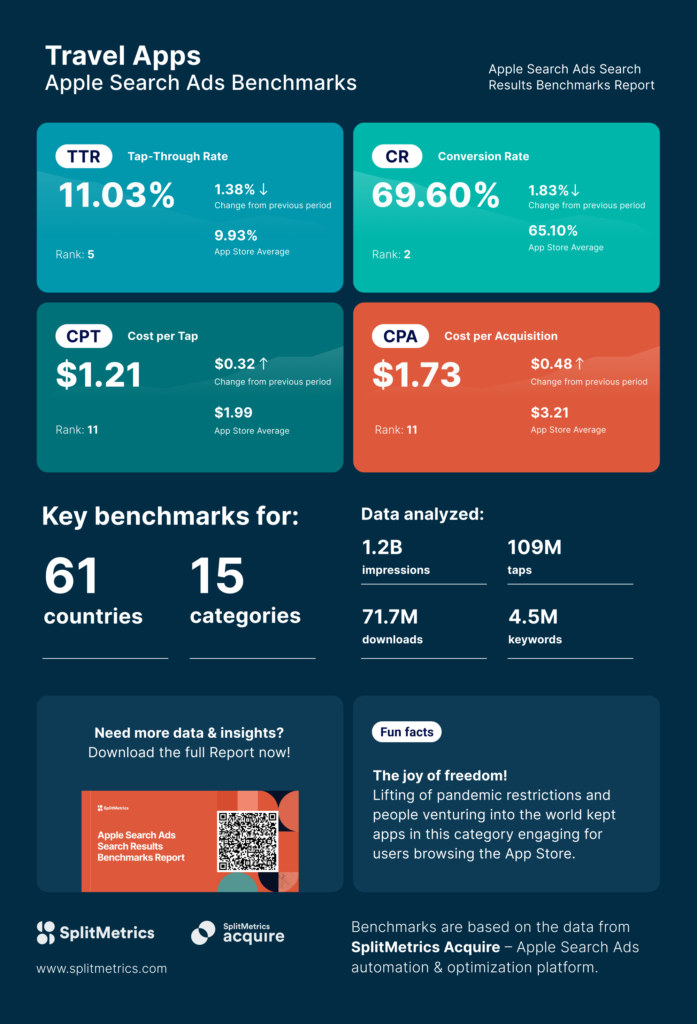
There are reasons to be optimistic about the outlook for travel apps, but we must keep in mind that a lot depends on their ability to deliver a seamless experience that truly helps to navigate the real world. Travel apps enjoy an average high conversion rate on the App Store, meaning that people are willing to experiment with new services. At the same time, costs of user acquisition (in terms of taps and installs) aren’t the highest when compared to other categories (although they are rising from their pandemic decline).
To summarize: our data indicates a good general outlook and that the time to act is now. Take our predictions for travel apps and make 2023 the best year so far!
Do you like the data you see for travel apps on the infographic? Download the full report and see much more! We’ve analyzed over 4.5M keywords, 1.2B impressions, 109M taps and 71.7M downloads to give you Apple Search Ads paid search results benchmarks for 15 categories and 61 markets.
Marketing budgets are among first expenses to be cut in the face of market uncertainty and rising costs of business operations. Apple Search Ads search results benchmarks are therefore a good indicator of what’s to be expected in a given market. What we see fills us with optimism, but as evidenced by travel app market trends – growth will require the full embrace of paid user acquisition and app store optimization efforts.
Find out how Flyin.com reduced their cost per acquisition by 15% with SplitMetrics Acquire. Flyin.com is the first and only “Online Travel Agency” in the Middle East that offers integrated travel services and helps create the best possible trip for over 50,000 travellers daily.
Taking into account unique functionalities of travel apps, market conditions and outlook for 2023 as well as our own data, we picked these trends to look out for and react to.
Better personalization of offers & user experience are key to handling a diverse, segmented market. Customers want such offers and they are willing to pay for them.
Hunters want access to exclusive and quick deals. Planners expect a streamlined and seamless experience. Those with resources will want to be sure that all their needs are met. Those cost-conscious will cherish the ability to fully control their expenses.
Two separate groups of users want different things from the same app? Read the case study of tonestro to see how they handled this issue with the help of custom product pages.
Only sophisticated algorithms are capable of delivering such perfectly tailored offers to individual preferences of users. Good analytics & first party data acquisition will be absolutely essential, especially given the rise of the second major trend among mobile app users…
Fun fact: users desire those personalized offers but don’t want to share their data necessary to create them. This is a problem not only for travel apps, but online marketing in general.
There’s only one safe option out of this predicament: a company has to rely on its own data in crafting its user experience and offers. To do that, you need a strategy and focus on user experience. If the value proposition is perfectly clear and a certain level of transparency is reached, chances of the algorithm picking relevant offers are much higher.
You need to have a good first data acquisition strategy, to ask just for the right amount of data necessary to deliver that seamless and fitting experience. Great user experience is key to achieving this.
Traveling is a way of life and by definition each and every subcategory of travel apps is designed with long term and possibly frequent use in mind. Those who are truly willing and have the resources to embrace this lifestyle, a premium plan or a subscription model is a viable option. Results, various data and reports by eDreams ODIGEO (one of the world’s largest online travel companies) and its prime subscription program are a fine example of this trend. Hopper, the very successful app mentioned before, is launching a premium subscription too, offering a wide range of benefits for 9.99% a month in the foreseeable future.
With optimistic outlook and declarations of keeping the same level or increased in travels, it’s viable for apps to introduce premium subscription plans. Any app in fact, meant to be used daily has potential for subscriptions as a monetization strategy.
Whether this means getting rid of ads to smoothen the overall experience and efficiency of planning & booking or exclusive access to timed offers – we expect subscription plans will become more prominent in the category.
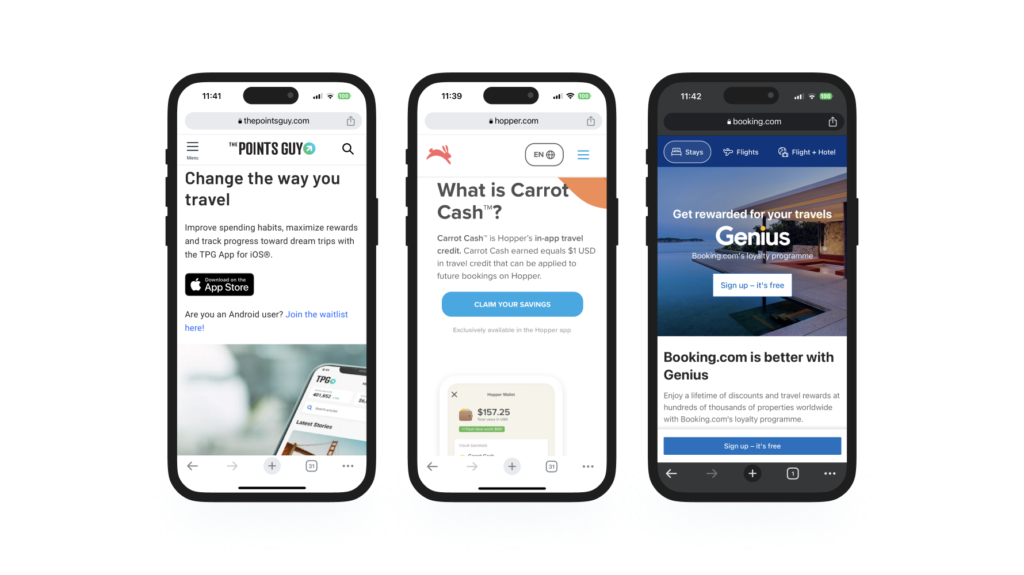
Hopper has Hopper Wallet for Carrot Cash, TPG App implements a points system (TPG stands for The Points Guy), Booking.com has a loyalty program called Genius, Uber uses rewards (for both rides & those ordering them), Expedia introduced them in 2022… and so on. AirBnB comes to mind as one of the few travel apps without some form of a loyalty program or a subscription strategy (as of now at least).
Most apps & travel services have loyalty programs, but there’s always room for improvement, as calls for personalized experiences put attention to varying expectations of target demographics.
Carrots, points, rewards… options are plentiful. Remember, that many customers are looking for more than transactional benefits.
Given this data, a good algorithm able to predict and deliver a perfectly tailored offer can do wonders for ab apps revenue.
We mentioned this trend already in our article on Mobile Trends. Here’s a brief reminder of what Super Apps are:
Super Apps is a term for large mobile applications that integrate multiple functionalities, thus replacing a number of smaller, separate apps.
From a technical perspective, a super app may in fact be a collection of several mini-apps hiding behind a robust and (hopefully) frequently customizable interface, allowing for the accomplishment of a multitude of diverse tasks.
Seamless experience is the goal and by very definition, Super Apps are designed to accomplish that. From planning & preparation, to getting you to the place with comfortable navigation, to taking care of all the payments. Mobile payments, mobile wallets are key among all the features new apps need to introduce.
Given all the economic factors and user preferences, Super Apps seem like a natural direction for travel apps to evolve into.
Bigger apps, more options, more data, more push notifications… all of this might be difficult to navigate. Plentifulness can build up pressure and this can be as detrimental to user experience as lack of viable choices.
Artificial intelligence and machine learning can really become handy here – in the form of intelligent assistants & chatbots, ready to process user requests and help them better prepare for their trip. There’s numerous evidence that voice search is becoming more & more important to travellers.
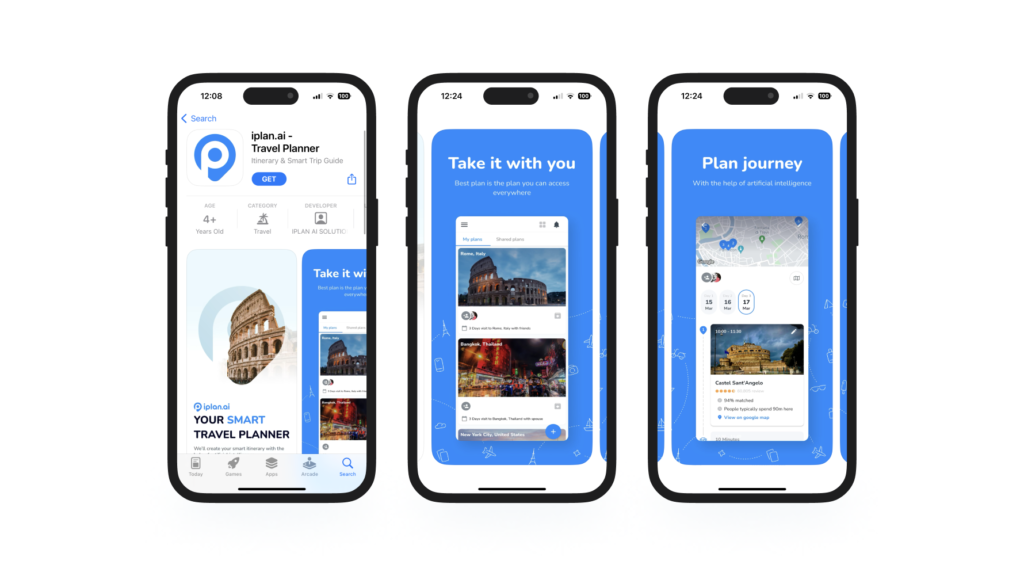
New AI based and optimized for travel companies solutions keep popping up. The technology is becoming more available for businesses of varying sizes. With limited manpower and an ever increasing pressure on personalization, a robot might be the only viable option for providing a smooth and less stressful user experience.

Thinking big is thinking disruptive and there is nothing more disruptive than AI right now — even in mobile marketing. Regardless of how you feel about AI, it’s wise to know its strengths and weaknesses. Read about them in our article “Mobile Marketing Meets AI: New Possibilities with ChatGPT”.
Mobile apps truly disrupted the historically desktop oriented travel industry. It’s true that we see constant growth of mobile apps and their evolution into Super Apps is very likely.
Progressive web apps use your browser and web technologies to deliver an app-like experience to users of websites. Visitors can place a shortcut to the website on their desktop and use it like an app later – even in offline mode.
From a user’s perspective, it’s a great solution to poor internet connectivity – a common problem of people traveling abroad and relying on mobile data transfers.
From a travel company’s perspective, progressive web apps can be a viable alternative to native apps. This may be the case of travel companies whose services aren’t used regularly enough to warrant an investment in a full blown app, as well as those businesses with established websites enjoying large traffic.
As a result, it’s no surprise that progressive web apps are present on Asian markets. Brands such as Trivago accomplished fantastic results with its PWA (as observed by Google). For some, a progressive web app may be a transitional solution, as users may ultimately shift to a native app, thanks to well thought out loyalty programs, subscription models and proliferation of higher end smartphones (as of 2023, Trivago has a successful native app on the App Store).
Nevertheless, progressive web apps are a thing to keep your eye on. It’s a tech with the potential to cause some market disruption by smaller businesses. There’s an interesting case of MakeMyTrip implementing this tech (keep in mind that they also have a prominent app on the App Store).
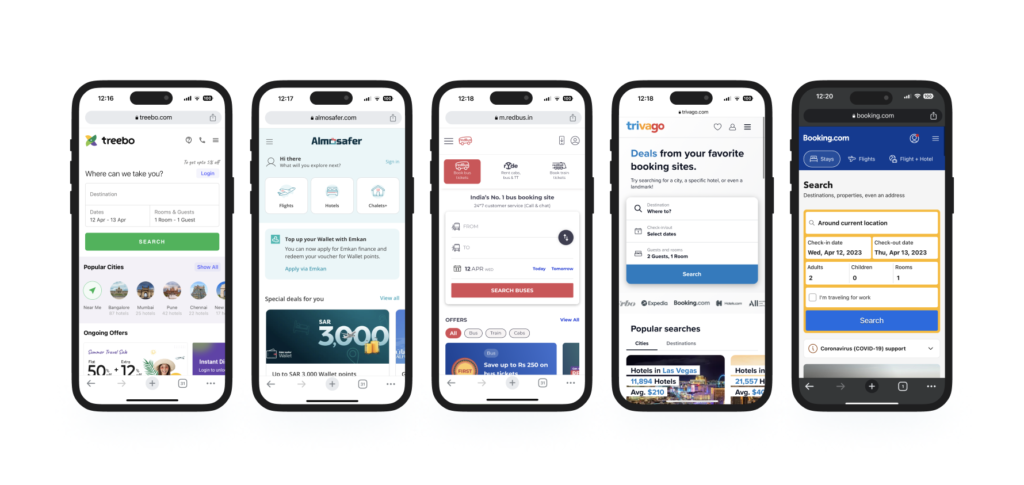
Many new powerful brands are mobile only and mobile apps are their primary means of doing business. Progressive Web Apps are a tech that can be a milestone for a company, not abandoning its roots and acquired customer base. Simply put, progressive web apps are a low cost evolution of mobile websites.
The trends we picked are worth keeping an eye on not only because of their potential for development or setting of new business objectives, but of their direct and immediate impact on travel apps user acquisition and marketing strategies.
Personalization of experiences, new important features and strikingly different preferences among customers show how important certain mobile marketing solutions and tools will inevitably be for travel apps in 2023.
The importance of personalization and gathering of first party information on the app’s target audience highlights the role of A/B testing as a key tool in evaluating what features attract new users best and what drives decisions of various target groups.
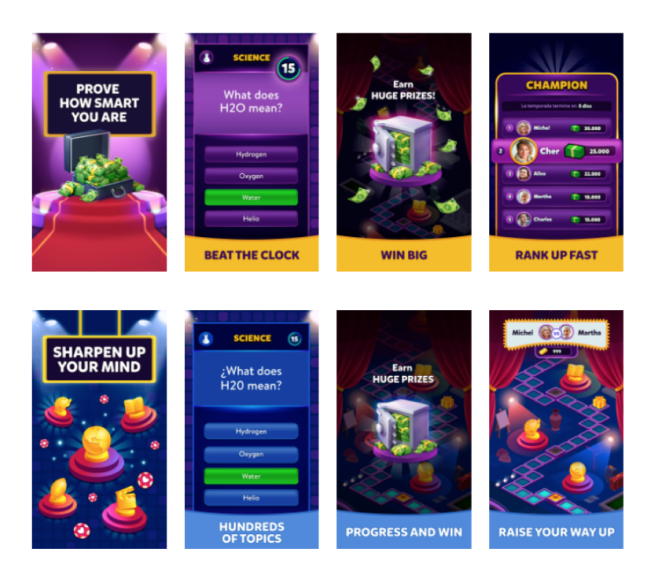
Another key tool of user acquisition and personalization are custom product pages. You can use them to highlight specific features of your app, test different value propositions and introduce seasonal campaigns or re-engage your audience.
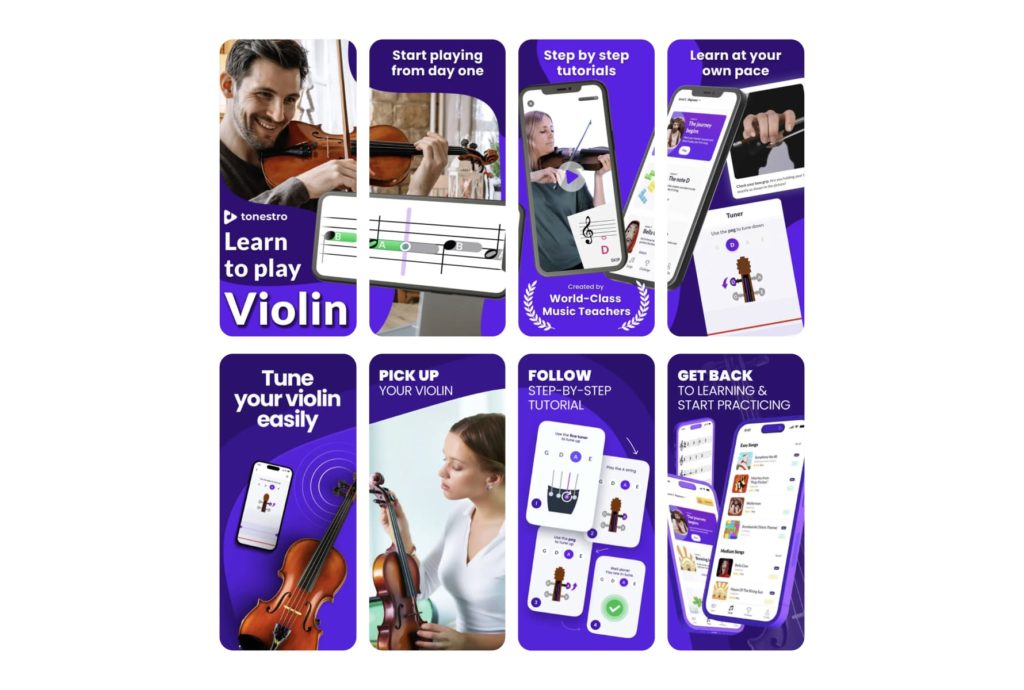
Relying solely on appropriate creatives you can effectively segment your audience (by testing their reaction to them). Using your icons, screenshots and other elements you can conduct demographic, psychographic, geographical, behavioural and even needs-based or value-based segmentation.
Custom product pages can also help you optimize your ads for specific markets, taking into account mentality and cultural differences. A surely important aspect of apps from the travel category.
To finally wrap up: personalized offers, new monetization plans, new functions and means of engaging users… if that doesn’t mark 2023 the year of app store optimization, custom product pages and A/B testing and validation than we seriously don’t know what will 🙂
Either way, we’re ready to immediately help you take immediate action to take the most out of 2023.